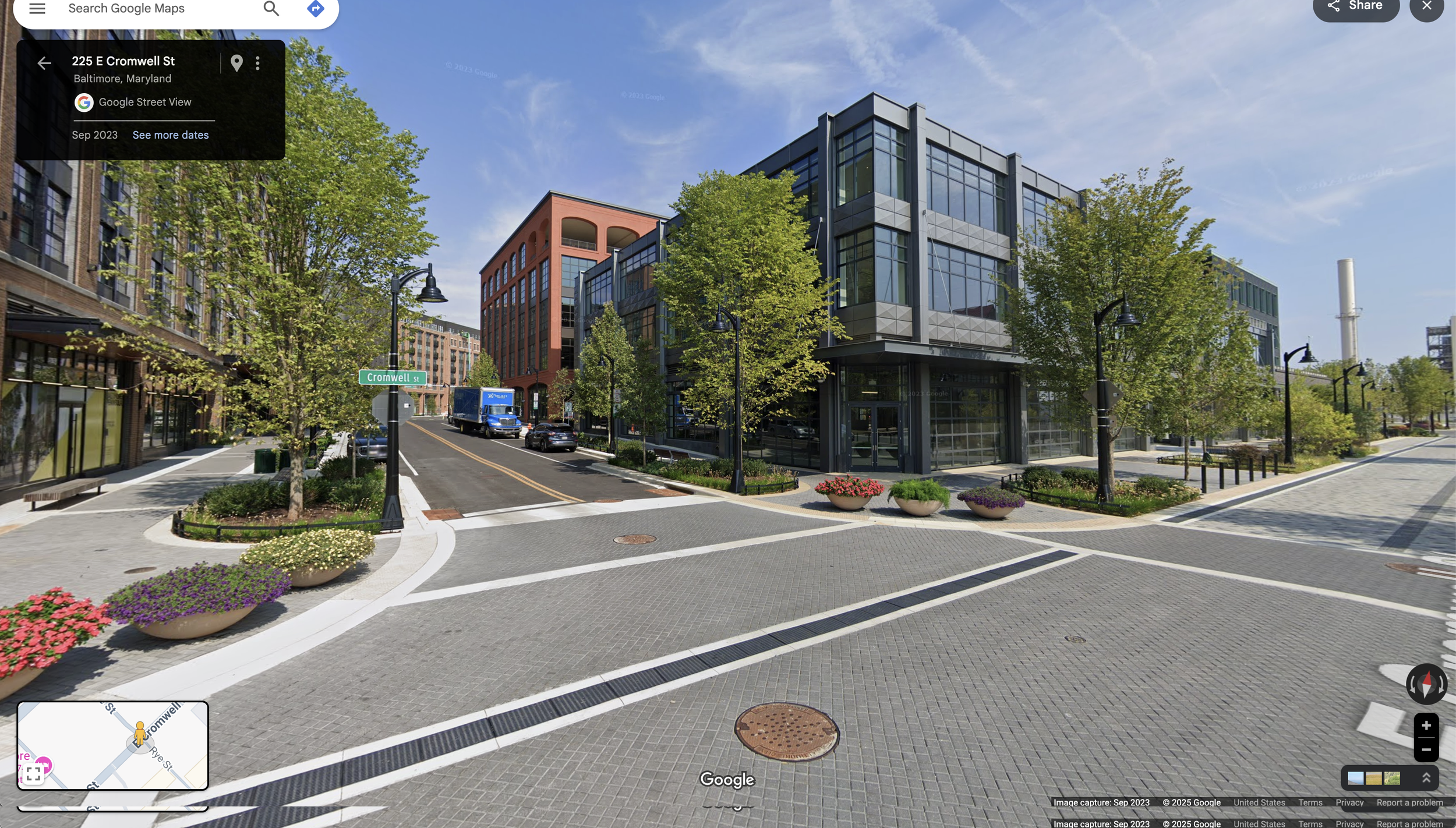What Ocean City Can Learn from Baltimore’s $1 Billion Ghost Town - March 21, 2025
Cities don’t become great because capital shows up. They become great because people build culture—slowly, organically, without permission. That’s what makes a place magnetic. That’s what gives it rhythm. And when cities forget that—when they put capital first and culture second—they end up with places that look exciting on paper and feel empty in person.
Case in point: Port Covington, Baltimore’s billion-dollar ghost town.
What was supposed to be a gleaming 235-acre waterfront revival—sparked by private investment and supercharged with public support—has become a cautionary tale in how not to do city-making. In this case, the public didn’t foot the whole bill. But the city did offer hundreds of millions in tax incentives, zoning relief, and possibly future infrastructure investments to make the mega-project viable. The payoff? Some buildings, a lot of vacant land, and not much else.
Street view of Port Covington today showing buildings as promised but with almost no car traffic, foot traffic, or stores rented.
And here’s the kicker: Port Covington isn’t some forgotten fringe. It’s surrounded by some of Baltimore’s most vibrant, culturally rich neighborhoods—Federal Hill, Riverside, Locust Point, and nearby Pigtown. If your only image of “Bawl’mer” is The Wire, don’t worry—Marlo didn’t take over the whole city. These neighborhoods have real foot traffic, local businesses, history, grit, and community. But instead of building from that momentum, the project walled itself off. It tried to fabricate a neighborhood from scratch—glass facades, sterile plazas, and corporate logic—with no connection to what makes Baltimore feel like Baltimore.
So what went wrong?
Simple: the plan put money before meaning. It tried to generate cultural gravity by pouring in capital, not by nurturing what was already there. Under Armour—the development’s anchor and original cheerleader—scaled back its role. Retail and housing never took off. Despite the glossy renderings and bold promises, the streets remain eerily quiet. Shiny doesn’t mean alive.
Now look at Ocean City.
The proposed Icona hotel on the Boardwalk’s most iconic site—the old Wonderland pier—isn’t Port Covington. But it’s walking a similar line: a large private development seeking public concessions in the form of zoning relief, possible tax breaks, and infrastructure accommodations.
Yes, it includes amusements and boardwalk-facing retail. But over time, the promises have quietly shrunk. Icona’s early plans showed more rides; now, each new version features less. Meanwhile, vague statements at winter town halls—like the Ferris Wheel being too rusted to fix and no clear plan for protecting the carousel—only deepen skepticism. This looks less like a vibrant amusement park and more like a placeholder.
Port Covington’s buildings looked fine on paper. They followed the right design cues—materials, scale, rhythm. But the neighborhood never came alive.
Icona’s design has a similar problem. It’s not offensive, but it doesn’t breathe. It lacks porosity and fails to engage Wayne or Sixth at street level. It sits beside the Boardwalk, not within it—and that’s the danger.
This project doesn’t reinforce the Boardwalk’s family-friendly gravity. It risks replacing it. If Wonderland becomes a hotel with token amusements, the north end stops pulling people in. The coherence dissolves. What’s left isn’t a cultural hub—it’s a backdrop.
And that’s the real risk.
Approving a hotel like Icona on the Boardwalk sets a precedent—one that invites more developers to follow suit. Rents go up. The old businesses that give the place its soul get pushed out. The Boardwalk won’t be a ghost town in name, but it will start to feel hollow.
It’s already quiet in March. That’s the problem we should be solving. Instead, this project risks locking in more seasonal vacancy by converting 15% of the ON-BD zone into a hotel with no meaningful plan for year-round use. While there is an alleged event space in the proposal, how substantial could it possibly be? A 252-room hotel needs around 350 parking spots just for its guests (at 1.4 spaces per room), not to mention parking for staff, shopkeepers, and vendors. With only 375 total spaces planned, there’s little room left for attendees of any significant event. That casts serious doubt on the promise of boardwalk-facing activity and public use.
Port Covington didn’t fail because of location. It failed because it forgot how neighborhoods actually happen.
Ocean City still has a chance to get this right. The Boardwalk doesn’t need another themed experience—it needs life. That means businesses that stay open past Labor Day, public space that stays alive in March, and development that supports the culture already here.
If we’re looking for models, we don’t have to look far. Asbury Park doubled down on culture—music, murals, pop-ups, small business—before capital showed up. That’s what gave it gravity. That’s what made it worth investing in. We can do the same.
Let’s fill the Boardwalk’s empty storefronts with small businesses who want to stay. Let’s connect Asbury Avenue and the Boardwalk with walkable corridors along 6th, 8th, and 14th—places with signage, benches, pop-ups, and street life. Let’s spill our biggest events, like the Fall Block Party, all the way to the ocean.
Ocean City doesn’t need a hotel to save the Boardwalk. It needs a plan to bring it back to life—one that starts with culture, not concrete.

